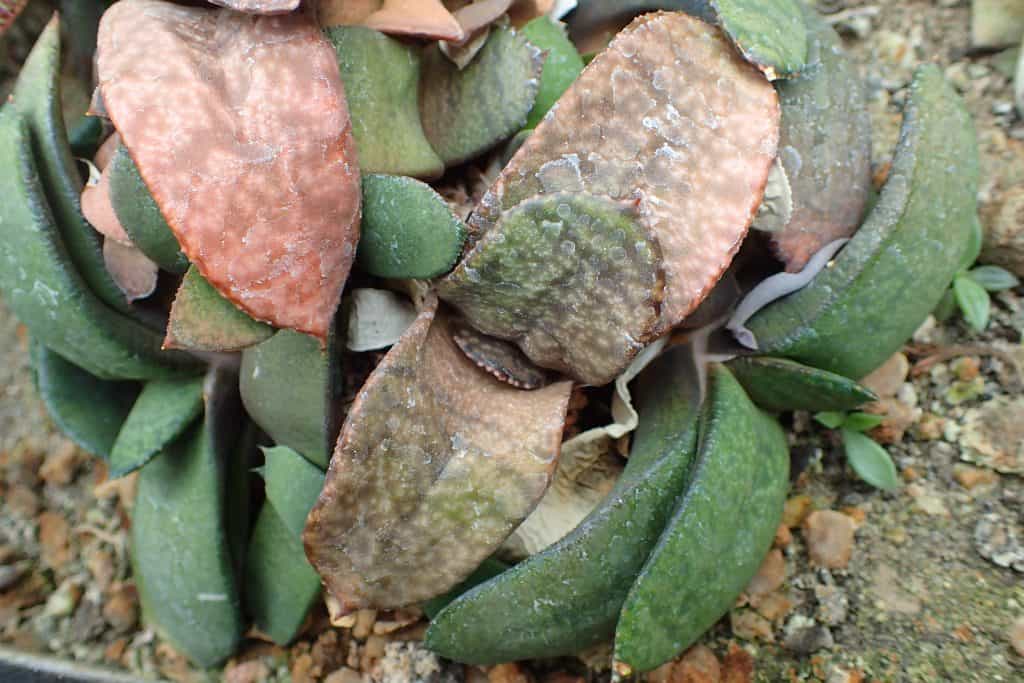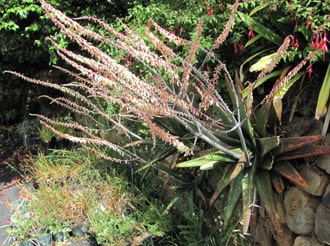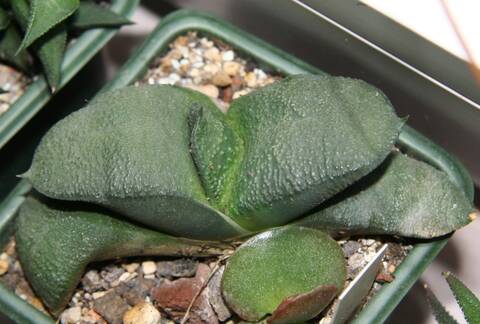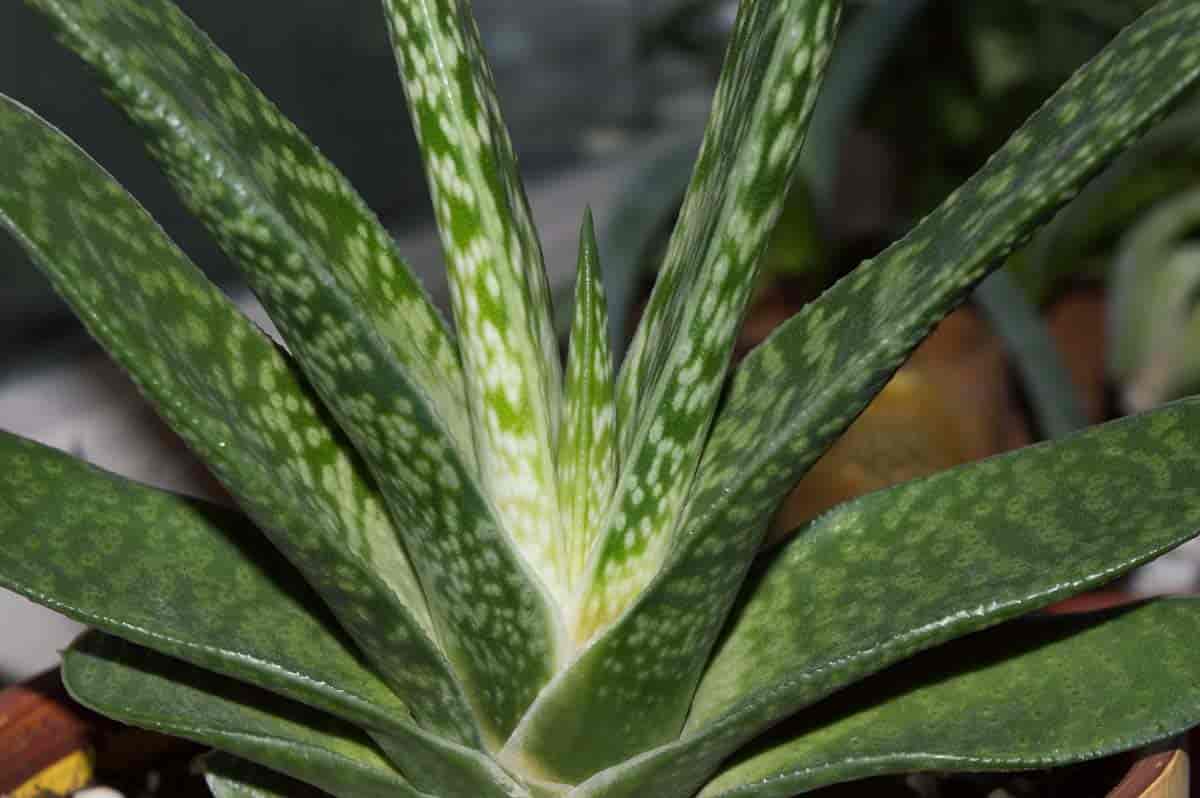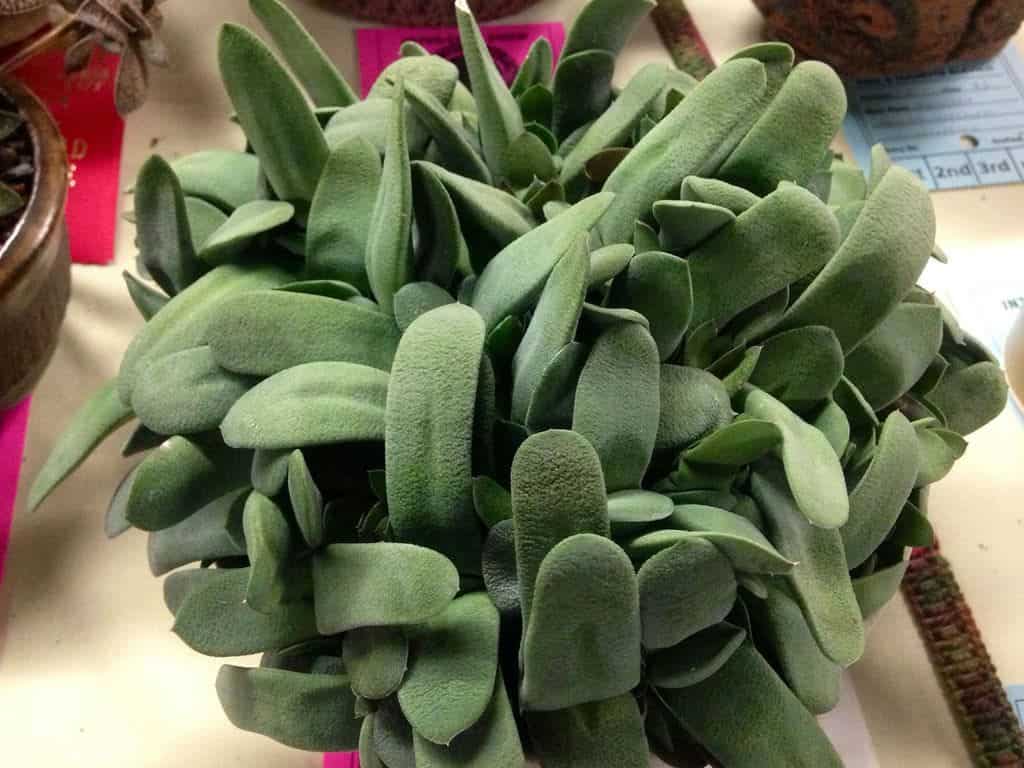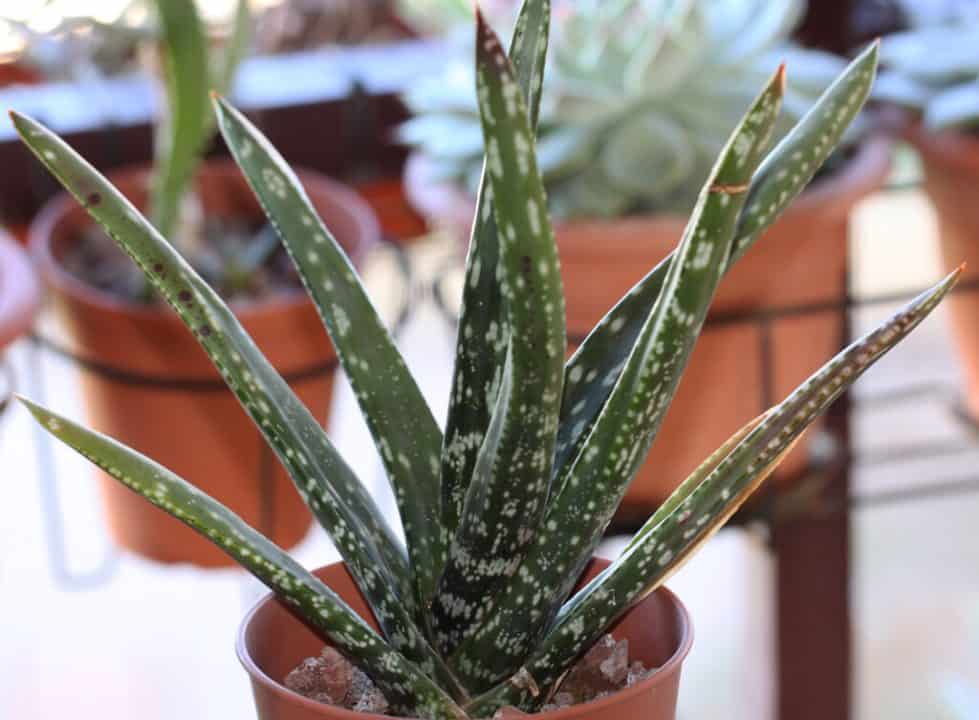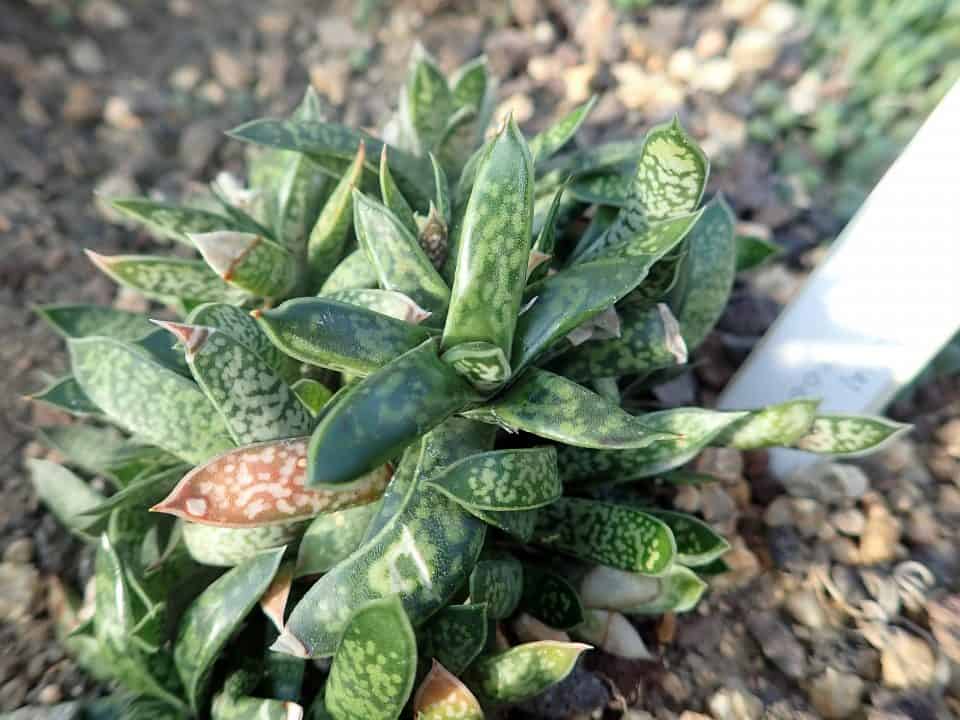Gasteria armstrongii, also known as the Gasteria nitida var. armstrongii or flat-leaf gasteria, is an attractive flowering succulent that’s native to South Africa, Botswana, and Namibia. In nature, it grows in rocky or sandy soils among low shrubs and perennials. Flat-leaf gasteria plants are winter-growing succulents, meaning they start growing in fall and continue into early spring.
They produce clusters of orange flowers on tall stalks that extend above the foliage late in the growing season.
The flat-leaf gasteria is one of the more unusual and fascinating succulents you can grow at home. Also known as the flat-leaf gasteria, this gasteria species has particularly large and unusual-looking leaves that is flat, hence its name.
While the plant may seem strange at first glance, it actually has some great benefits as well as requirements to grow successfully in your home garden or succulent terrarium!
It features a rigid, erect body with smooth, fleshy leaves in pink, purple or green hues that emerge from the top of the body like tongues sticking out from the mouth of an animal.
Origin and distribution
Gasteria armstrongii is a perennial succulent that is native to South Africa, it is part of the Asphodelaceae family and is also known as the flat-leaf gasteria due to its long, tongue-like leaves. It is commonly found in the Cape Provinces and the eastern part of the country.
Gasteria armstrongii is a popular houseplant because it can be grown both indoors and outdoors in frost-free climates. Indoors, they need bright light and should be watered sparingly; too much water will rot the roots.
If grown outside, this plant needs protection from freezing temperatures but doesn’t require much additional care other than occasional watering. If taken care of properly, this type of gasteria can live for many years.
Gasteria armstrongii propagation
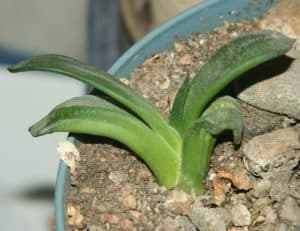
Gasteria armstrongii is a beautiful, easy-to-grow succulent that makes a great addition to any indoor or outdoor space. This plant is perfect for those who are new to succulents, as it is very tolerant of neglect.
Propagating Gasteria armstrongii is very easy and can be done by leaf or stem cuttings. Simply take a cutting from the plant and allow it to callous over for a few days before potting it up in well-draining soil. Leaf cuttings will form roots along the entire length of the cut side, while stem cuttings will form roots only at the base.
Gasteria armstrongii also grows well from seed; sow seeds on top of moistened sterile potting mix and cover with a thin layer of sand or perlite to prevent moisture loss. Germination usually takes around four weeks but may vary depending on temperature.
Once your plants have reached about six inches tall, transplant them into individual pots to grow more quickly and give them enough room to spread out their leaves.
Gasteria armstrongii care information
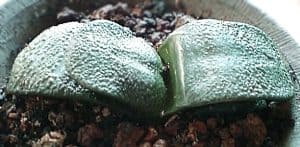
Gasteria armstrongii plants are easy to care for and make a great addition to any succulent collection. They prefer bright, indirect light but can tolerate low-light conditions.
Light requirement
Gasteria armstrongii does best in bright, indirect light but can also tolerate low-light conditions. If the light is too low, the leaves will become elongated and leggy. If the plant is getting too much light, the leaves will develop brown spots. Gasteria armstrongii is a versatile plant that can adapt to a variety of lighting conditions.
Soil/potting mix
This succulent prefers a well-draining soil or potting mix. If you’re using a store-bought mix, make sure to add extra perlite or pumice to ensure good drainage. Gasteria armstrongii is not particularly fussy about soil pH but leans towards the acidic side.
As with most succulents, overwatering is the number one killer of this plant. Let the soil dry out completely between waterings.
Watering
Gasteria armstrongii is a succulent, so it doesn’t need much water. In fact, too much water can be harmful to the plant. Water the plant about once a week, allowing the soil to dry out completely between watering. If the leaves start to wrinkle, that’s a sign that the plant needs more water.
Use lukewarm water and pour it over the top of the soil. Do not use cold or hot water, as this will shock the roots and cause rot or a loss of roots.
Fertilizer
Gasteria armstrongii is a succulent that is native to South Africa. The plant is easy to care for and can tolerate a wide range of light and watering conditions.
However, it is important to fertilize Gasteria armstrongii regularly to ensure that it stays healthy and grows properly. A good fertilizer to use on this plant is 16-16-8 because it has nitrogen, phosphorous, and potassium in the right proportions. Fertilizing plants also stimulates their root growth, so that they absorb more water through their roots.
Temperature
Gasteria armstrongii is a succulent that originates from South Africa. It is a heat-loving plant that does best in temperatures between 70 and 90 degrees Fahrenheit. However, it can tolerate cooler temperatures as long as it is not exposed to frost or freezing temperatures. If the temperature gets too cold, the leaves of the plant will start to turn brown and wilt.
Humidity
Gasteria armstrongii is a succulent that prefers high humidity and lots of indirect sunlight. If the air is too dry, the leaves will start to curl and the tips will turn brown. Brown spots on the leaves are also a sign of dehydration.
The ideal humidity range is between 60-80%. Plants should be watered regularly but not overwatered. One way to tell if your plant needs water is by checking the soil; if it’s still moist then you don’t need to water it again.
Pruning
If you want your gasteria armstrongii to look its best, you’ll need to give it a little TLC in the form of pruning. Pruning helps encourage new growth and keeps the plant looking tidy. To prune, simply cut off any dead or dying leaves. You can also remove any leaves that are crowding the plant or that are significantly smaller than the others.
When to repot
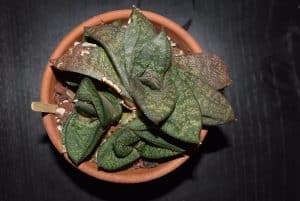
Gasteria armstrongii plants need to be repotted every two to three years, or when they outgrow their pot. To repot, simply remove the plant from its current pot and place it in a new one that is slightly larger. Be sure to use well-draining soil and a pot with drainage holes.
When the flat-leaf gasteria gets too big for the pot, it can’t draw in water effectively because there isn’t enough room for roots to grow. A big sign of this happening is if your plant’s leaves are turning yellow or falling off as a result of too much water sitting on top of them for too long at once.
Repotting will not only give your plant more room to grow but also healthier roots as it won’t be crowded anymore.
Dormancy/Winter rest
Gasteria armstrongii goes dormant in winter, meaning that it doesn’t grow or produce flowers during this time. This is a natural response to the shorter days and cooler temperatures of winter. During dormancy, the plant will rest and store energy so that it can resume growth in spring.
If you live in an area with a true winter, you may want to give your Gasteria armstrongii a winter rest by keeping it slightly drier and cooler than usual during this time. However, if you don’t want to do this, try getting it ready for winter before Thanksgiving.
Feed the plant well in October and November so that when December comes around, its roots are healthy enough to withstand the cold and lack of water.
As soon as spring arrives, re-pot your Gasteria armstrongii into fresh soil (a peat-based mix is ideal) every three years or so.
Gasteria armstrongii flower & fragrance
The flowers are small and tubular, and they grow in clusters on tall stalks. They are typically a light pink or a lavender color, but they can also be white or green.
Growth rate
Gasteria armstrongii is a slow-growing succulent that can reach up to two feet in height. It’s a popular choice for gardens and indoor spaces because of its low maintenance requirements.
This plant is native to South Africa and gets its name from its long, tongue-like leaves. Gasteria armstrongii is tolerant of a wide range of growing conditions but prefers partial sun and well-drained soil.
Toxicity
Gasteria armstrongii is not considered to be toxic to humans or animals. However, it is important to keep this plant out of reach of small children and pets, as they may be tempted to chew on the leaves. If ingested, the leaves can cause stomach upset. In rare cases, the sap may cause skin irritation.
USDA hardiness zones
Gasteria armstrongii thrives best in USDA hardiness zones 10-11, and the plant can reach a height of 12 inches. It is not recommended for use indoors.
Pests and diseases
Gasteria armstrongii is a fairly resilient plant, but it can be susceptible to mealybugs and aphids. If you see any of these pests on your plant, you can remove them by hand or with a mild insecticide.
The flat-leaf gasteria is also susceptible to root rot, so make sure to plant it in well-draining soil. If you notice the leaves of your plant turning yellow or brown, this could be a sign of too much sun exposure.
Moving the plant into an area that gets less sunlight should help the leaves return to their original color. When watering, make sure not to overwater as this can lead to root rot. You may want to wait until you notice signs of wilting before watering again or only give it enough water that runs out of the pot’s drainage holes.
